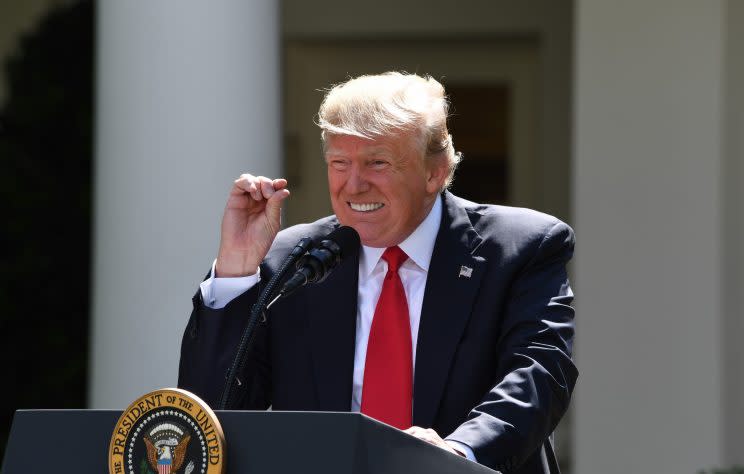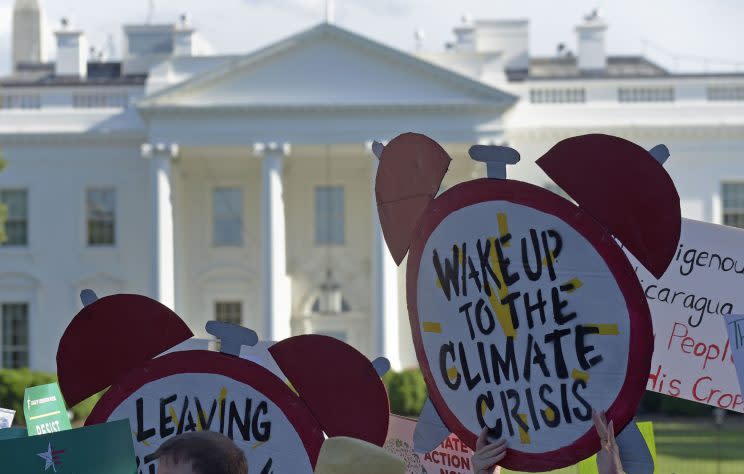What is the Paris climate agreement? This is what Donald Trump's decision means for the world

Donald Trump’s dramatic decision to withdraw the US from the Paris Agreement, the world’s first comprehensive treaty on climate change, has caused political shockwaves around the world.
No sooner had he agreed to do so, the American president’s decision was criticised around the world.
It means that the agreement is now not signed by three countries in the world, Syria, Nicaragua and the US.
But what exactly has President Trump rejected and what are the implications?
MORE: Six alarming things that could happen in UK due to climate change
MORE: Support for Trump impeachment reaches highest level
What is the Paris Agreement?
A global deal, agreed under the United Nations in the French capital in December 2015, which will see action by all countries to curb rising temperatures.
Why is it important?
If we continue to pump greenhouse gases into the atmosphere on current trajectories, we are facing a world with temperatures of more than 4C above pre-industrial levels by 2100, hotter globally than at any time in human history.

This will lead to sea level rises, more intense storms and flooding, more extreme droughts, water shortages and heatwaves as well as massive loss of wildlife and reduction in crop yields, potentially sparking conflict and mass migration.
The higher temperatures rise, the worse the situation will be so we need to halt the emissions that cause global warming.
What does the agreement involve?
The Paris Agreement commits countries to take action to limit temperature rises to “well below” 2C above pre-industrial levels and pursue efforts to keep them to 1.5C, which requires emissions to be cut to net zero by the second half of the century.
Current climate plans by countries are not enough to meet the targets so there is a five-year review and ratchet mechanism to increase ambition, and finance for poor countries to develop along a low-carbon path and to cope with the impacts of climate change.
Why did President Trump pull the US out?
Trump, who has described climate change as a hoax by the Chinese to hurt US manufacturing, is honouring a pledge made on the campaign trail to quit Paris and boost fossil fuel production at home.
He claims the deal allows countries such as China and India to continue polluting, and gain a “financial advantage” over the US.
Will it prove a popular move in the US?
Certainly in some quarters, with a strong vein of climate scepticism in parts of the establishment and among some of Mr Trump’s supporters.

But surveys show the majority of Americans want to stay in the accord, solar jobs are booming and US entrepreneurs such as Elon Musk are driving forward clean tech.
Even major oil companies have urged the US to stay in. States such as California have already pledged to continue action to cut their emissions regardless of what the president does.
How does America quite the agreement?
A country can serve notice it is quitting the deal three years after it came into force for them, and it then takes another year to leave.
But in the meantime, it will not implement its commitments under the deal to cut greenhouse gas emissions, or contribute financially
What does it mean for the world?
America has agreed to reduce its emissions by 2025 to 26%-28% of 2005 levels, about 1.6 billion tonnes.
There are concerns that the failure of the world’s second biggest polluter to honour its commitments will make it harder for the world to curb temperature rises to well below 2C.

 Yahoo News
Yahoo News 


